Anzac Day services: Prince Edward, Julie Bishop step out to honour the Anzacs in London
As Australians gathered across the globe to honour the nation’s fallen on Anzac Day, Julie Bishop and members of the royal family have paid their respects in London.
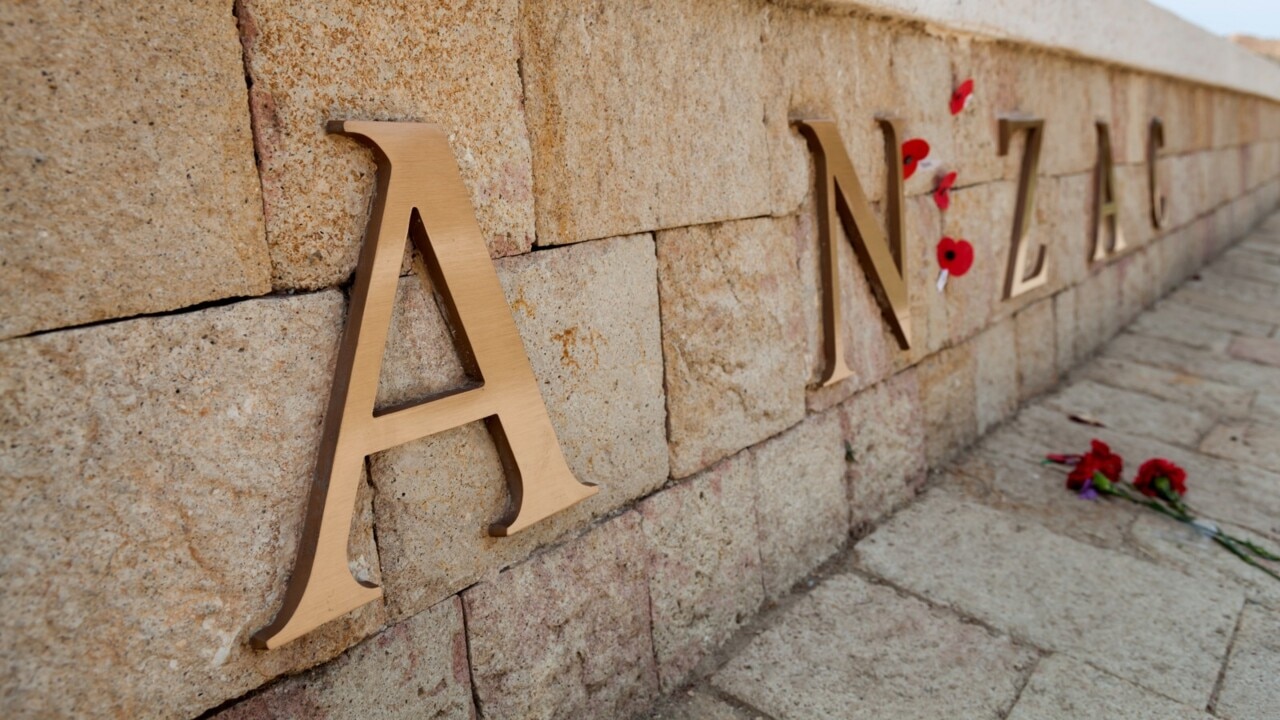
World
Don't miss out on the headlines from World. Followed categories will be added to My News.
As Australians gathered across the globe to honour the nation’s fallen on Anzac Day, the Duke of Edinburgh and former foreign affairs minister Julie Bishop joined in the commemorations at the London dawn service.
Dressed solemnly in black, Prince Edward was greeted in the bracing chill of Thursday morning for the Dawn Service at Wellington Arch by the Australian and New Zealand high Commissioners.
Thousands of people waited in the pitch black before the start of proceedings, 109 years since the day was first marked in London.
The 14th in line to the throne, who represented the King, struck a solemn figure as he laid a wreath of fresh poppies at the right column of Wellington Arch to honour Australia and New Zealand’s war dead.
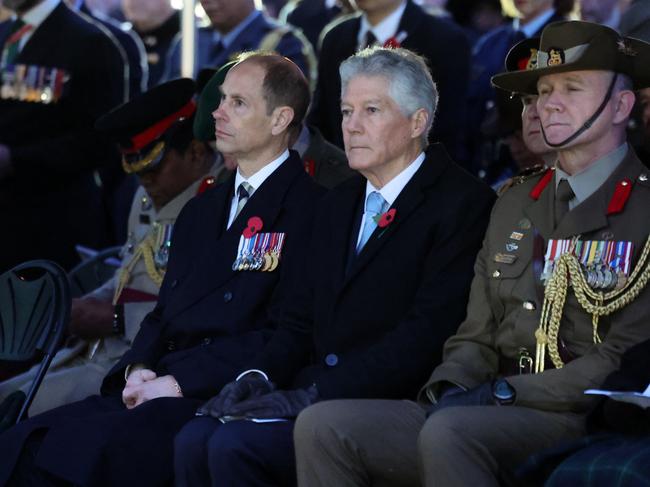
In his address Australian High Commissioner Stephen Smith read a poem from Clyde Hamilton.
“The Anzac Day march was over — the old Digger had done his best,” High Commission Smith said.
“His body ached from marching - it was time to sit and rest.
“He made his way to a park bench and sat with lowered head.
“A young boy passing saw him - approached and politely said, “Please sir do you mind if I ask you what the medals you wear are for?
“Did you get them for being a hero, when fighting in a war?…”
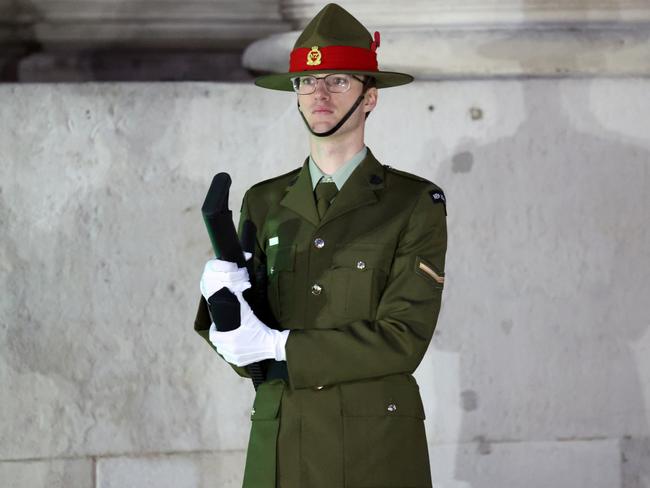
Silence pervaded the Dawn Service at Wellington Arch as the Last Post played by a bugler sounded followed by a moment’s quiet and a military reveille. Cantor Cassandra Wright sang the national anthems as the sun rose.
During the service the New Zealand High Commissioner Phil Goff alos laid a wreath of poppies among those placed at the Arch.
In his address to the crowd, Mr Goff said: “Today is this day we have chosen to commemorate those who fought and died for our countries in all wars.
“Gallipoli was the first time our troops had fought together as the Australian and New Zealand Army Corps.
“It was a bloody campaign that would cost the lives of tens of thousands of Australians and New Zealanders and other Allied forces while failing to meet its objectives.
“The lasting legacy of the campaign however was to lay the foundation for a strong and enduring bond of comradeship between our two Antipodean countries.”
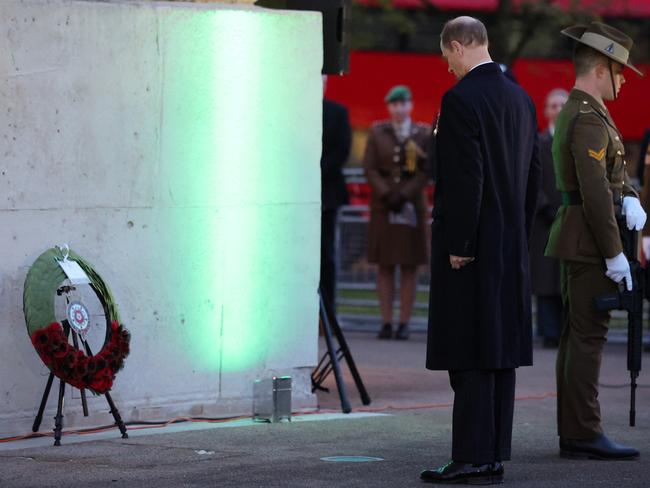
He added: “Today in the United Kingdom we are both working to train Ukrainian soldiers to help in their fight against aggression for their freedom and independence, and in the Red Sea to protect freedom of navigation and the rule of international law.
“Both of our countries are committed to come to the assistance of the other in the event of it being attacked.
“What was also achieved at Gallipoli was for each of our countries the emergence of our own sense of identity and nationhood. Those who went to war as soldiers of the Empire, returned with a clear sense of being New Zealanders and Australians.
“Today we do not glorify war. Rather we pay tribute to the sacrifice, the courage and the resilience of those who put their lives at risk and those who laid down their lives for our tomorrow.”
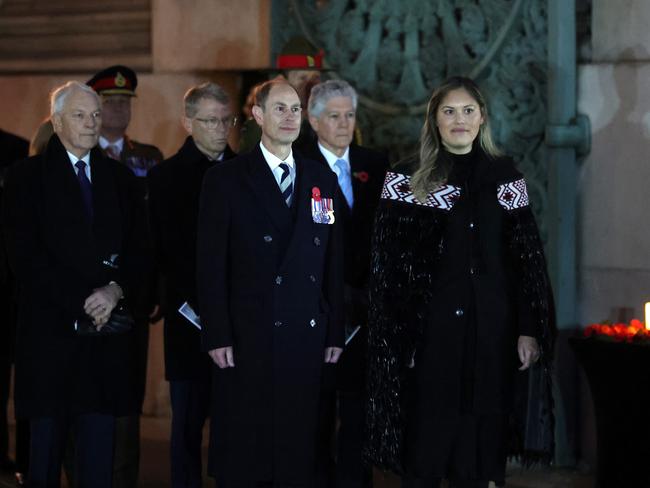
The service concluded when Prince Edward signed the book of remembrance whilst music resonated from a Didgeridoo. A Māori waiata (song) was performed by London-based Ngāti Rānana.
Members of the public were barred by security from laying wreaths and told only VIPs could enter the pen around Wellington Arch.
“I had a small wreath in honour of my grandfather who was an Australia soldier in World War Two and died in Syria fighting for the free French against the Germans - it was a beautiful service but when I went to lay my wreath for him security wouldn’t allow me in, they said only the official party could,” said attendee Deborah, 55, from Sydney.
“The second police officer said I could come back in the afternoon when everyone had gone, what’s the point then? It’s all over, the moment’s gone.”
Former foreign minister Julie Bishop and her new partner, Perth man Stephen Gray, attended the ceremony.
“It was a beautiful service,” she said, wearing a pair of blue suede heeled boots.
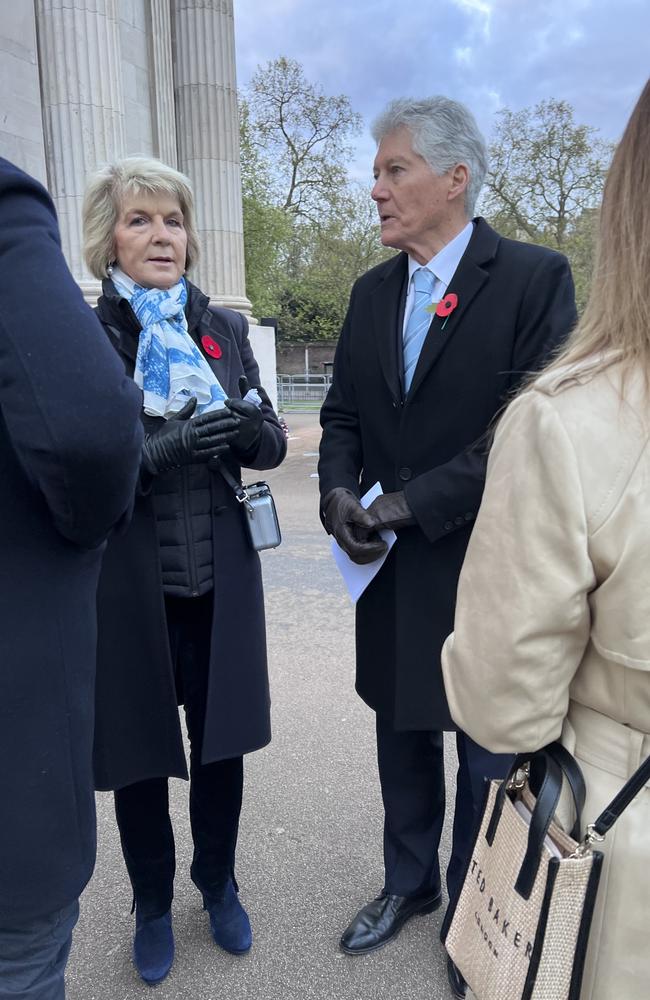
Later the Duke, 60, a full time working royal whose seventy-plus patronages reflect his professional and personal interests, which include The Commonwealth Games Federation, The National Youth Theatre of Great Britain, The Orpheus Centre Trust, Northern Ballet and the National Youth Orchestras of Scotland, attended the traditional service of commemoration and thanksgiving at Westminster Abbey.
Afterwards, Prince Edward was due to attended the annual Gallipoli Association Wreath-Laying Ceremony, in the Crypt at St Paul’s Cathedral and took on the patronage of the Association, previously held by his late father Prince Philip, The late Duke of Edinburgh.
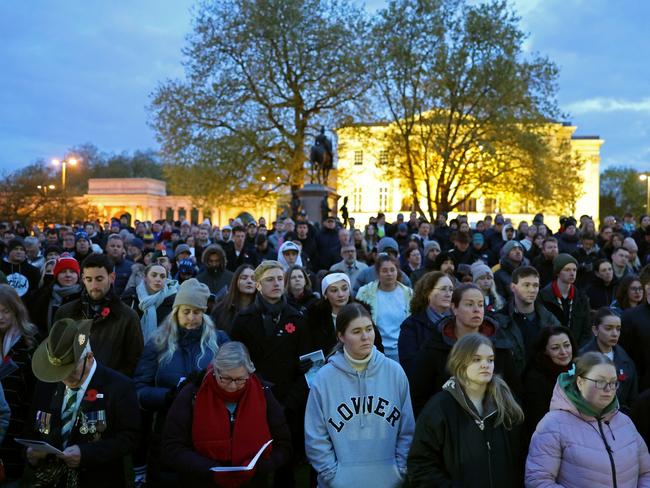
The Gallipoli Memorial, which commemorates all those who took part in the campaign, was unveiled on 28th November 1995 by Prince Philip before eight surviving veterans. Founded in 1969, the Gallipoli Association aims to raise awareness of the Campaign, to support the study of the legacy and lessons of the campaign, and to ensure all who served and lost their lives, are not forgotten.
Anzac Day on April 25 marks the anniversary of the start of the First World War Gallipoli landings, and is a national day of remembrance for Australia and New Zealand.
Thousands of Anzac troops - Australian and New Zealand Army Corps - lost their lives alongside British allies in the ill-fated 1915 campaign.
Allied forces launched an amphibious attack on the strategically important Turkish peninsula, which was crucial to controlling the Dardanelles straits, the important route to the Black Sea and Russia.
But the plan backed by Winston Churchill, at the time the first Lord of the Admiralty who masterminded the Gallipoli campaign and was its chief public advocate, was flawed and the campaign, which faced a heroic defence by the Turks, led to a stalemate and retraction eight months later.
Its legacy is the celebration of the “Anzac spirit” - courage, endurance, initiative, discipline and mateship - shown by the Antipodean troops.

Buckingham Palace endorsed Anzac Day as an important day in the annual calendar to be observed in London.
“Anzac Day has been observed in London since King George V attended the first service
at Westminster Abbey in 1916 to mark the anniversary of the landings at Gallipoli.
“Since then, the services have become an important moment to commemorate all,” a Buckingham Palace spokesperson said.
Earlier, at the dawn service, assistant adviser for the Royal Australian Navy said it was important to pass on the Anzac message to future generations.

‘LEST WE FORGET’: MATT KEOGH HONOURS ANZACS IN FRANCE
More than 3000 people gathered at the Australian National Memorial in Villers-Bretonneux, France, for a bitterly cold Anzac Day Dawn Service.
Despite the 2C morning, none of the Australians solemnly paying their respects uttered a complaint. All were acutely aware of their comfort and safety compared to the sacrifice of Australian soldiers who liberated this crucial village on Anzac Day 1918, halting the German Spring offensive towards nearby Amiens.
Dignitaries at the formal dawn service included Australian Ambassador to France Gillian Bird and Veterans’ Affairs and Defence Personnel Minister Matt Keogh, who laid a wreath and made the commemorative address.
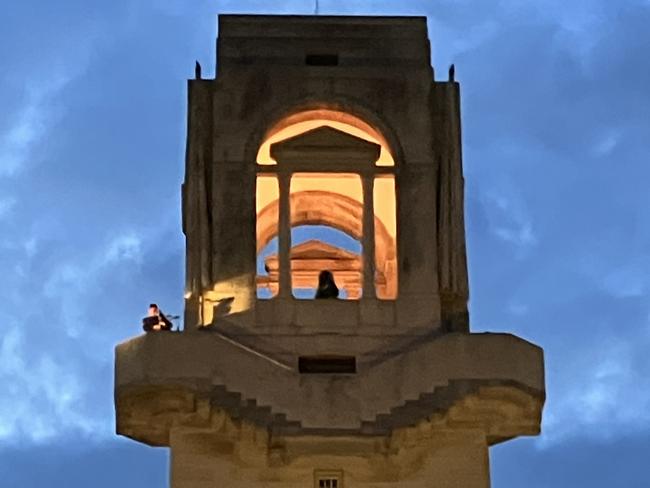
Like many present, Mr Keogh has a distant relative buried nearby, Private Victor James Mocatti, killed in heavy shelling in 1917, just after his 20th birthday.
“We remember all who have served in Australia’s name and all those who never returned home,” he said.
“Of the 330,000 Australians who served in the First World War, more than 60,000 lost their lives.
“Many of whom lie eternal here on the Western Front – our most deadly theatre of war.
“On this peaceful morning, it’s hard to believe that the fields surrounding us were the scene of such intense fighting and bloodshed during the Battle of Villers-Bretonneux, 106 years ago.
“At dawn on the 24th of April, the Germans attacked and captured the town of Villers-Bretonneux.
“That night, Australian troops responded, leading a successful counter attack that liberated the town the following morning, on the third anniversary of the Anzac landings at Gallipoli.”

Mr Keogh went on to note that “on Anzac Day, we pay tribute to more than two million Australians who have served our nation and its allies in all wars, conflicts and peacekeeping operations. We also acknowledge the sacrifices of their families”.
“Lest we forget.”
— With Brad Crouch
THOUSANDS TURN OUT FOR ANZAC AT GALLIPOLI
The nation might not be at war but across the world Australian Defence Force troops have reflected on courage and mateship of their service and that of Anzacs deployed before them.
The ADF has troops deployed on 22 overseas operations from the deserts of South Sudan to freezing wastelands of Antarctica, the mountains about southern Lebanon, the disputed South China Sea, the Indo Pacific, the Middle East and other locations too classified to name.
Equally, record numbers of civilians have this year made pilgrimages overseas for Anzac commemorations including Gallipoli.
In Gallipoli about 1650 are expected to attend the Dawn Service with 2000 people at Villers-Bretonneux in France — the most registrations for both sites since 2018.

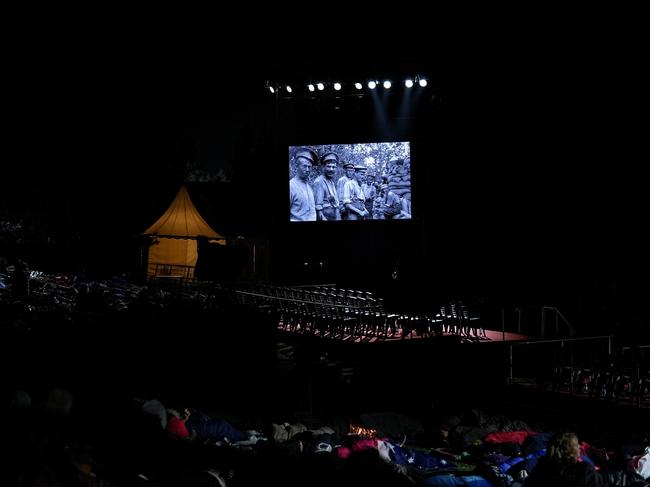
Three of Australia’s defence portfolio-related ministers travelled overseas for commemorations, including Defence Minister Richard Marles.
Speaking from Gallipoli, Mr Marles said it was a time to reflect on the 103,000 Australians who gave their lives in service to the country but also the 1500 ADF personnel currently deployed on operations.
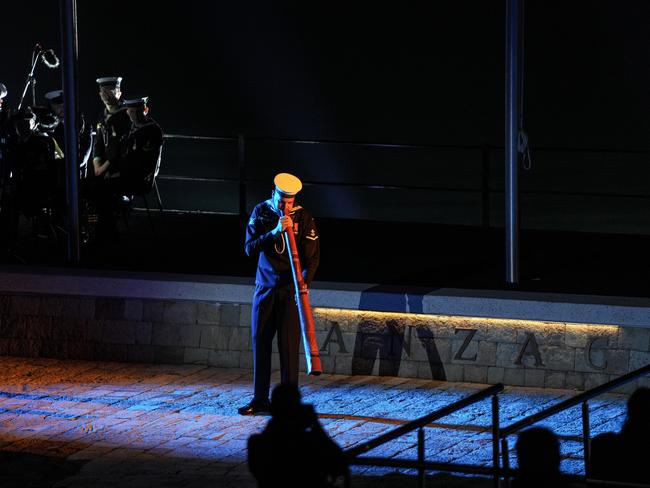
Mr Marles also referenced both the Port Arthur tragedy and the more recent Bondi mass murder as exemplar of the Anzac spirit, likening it to the troops of Gallipoli who jumped out of the trenches in the face of possible death.
“This spirit has been on display over the last 12 months in a difficult and tragic year for the Australian Defence Force,” he said.
“It was also on display in 1996 when Lynne Beavis, an off duty nurse, ran into the Broad Arrow Cafe in the darkest, most terrifying moment, to help those who had been shot and wounded at Port Arthur.
“And it was on display when Inspector Amy Scott faced the terror at Bondi just two weeks ago. This spirit has shone brightly in the men and women who have worn our nation’s uniform throughout our history, in conflicts large and small.”
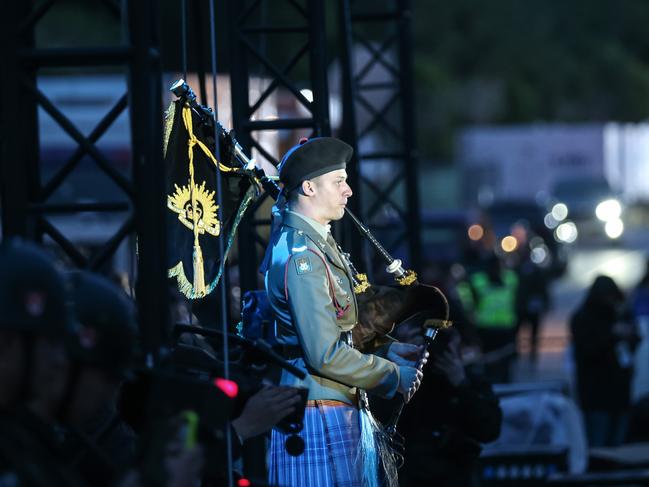
AUSSIE TROOPS’ ANZAC REFLECTIONS
Never is there a prouder day particularly for the hundreds of men and women to wear the ADF uniform while overseas in the service of their country.
Deployed to South Sudan attached to a UN mission, Squadron Leader Dean Kremer asked that Australia reflect particularly on the 16 Australians who made the ultimate sacrifice while on past peacekeeping operations.
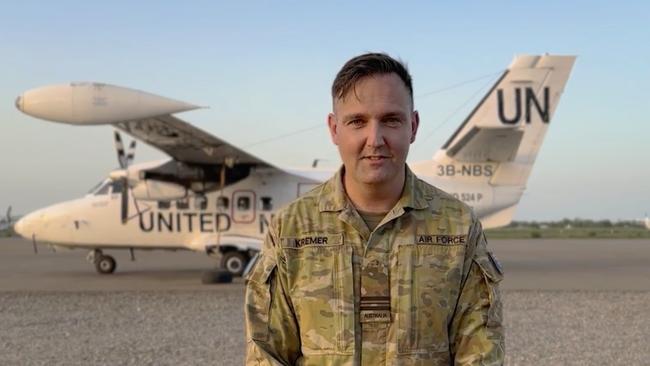
Far from home too, Navy Lt Rabeca Appelkamp serving on Operation Aslan also reflected on those who served before her and thanked her family for supporting her in her chosen career.
Captain Matthew Sanderson said he was commemorating with his mates.
“Anzac Day provides an opportunity for us to reflect on the values of the ANZACS all those years ago,” he said.
“Values such as endurance, courage, ingenuity, mateship and a good sense of humour – values which remain relevant to this day.”
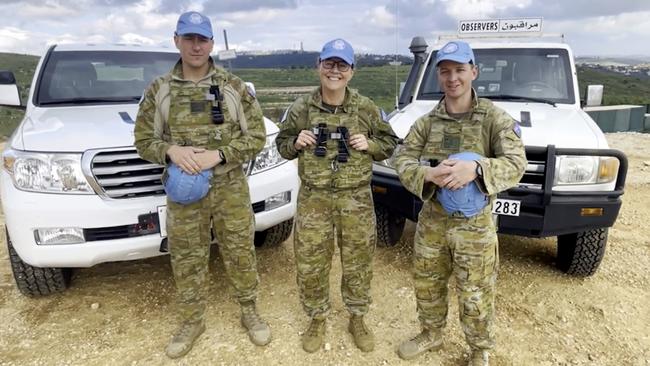
For Able Seaman Sammy Rotherham serving on HMAS Hobart off the coast of the Philippines, it was a time to remember his grandfather who served in Vietnam, his father in Timor and his brother also currently in the Navy.
For Lt Commander James Dobson, the day has meant time to reflect on those service men and women who have not only made the ultimate sacrifice “but continue to make sacrifices in the defence of our country”.

Flt Sgt Kate Morris at an undisclosed location in the Middle East region marked her sixth Anzac Day abroad while Major Craig Stephenson on Operation Mazurka in Sinai wished all back home well.
“It’s both a humbling and a proud moment to serve in the Australian Army on Anzac Day on a location that has such strong linkages to the ANZAC legend,” he said.

On Operation Paladin in southern Lebanon, Army Major Brad May was on patrol with a soldier from New Zealand.
“This is a place where Australians and Kiwis have been serving and fighting alongside each other since the First World War,” he reflected.
Many other personnel indirectly revealed the sacrifices they had made, speaking about partners they hoped to go back to marry, children born they had yet to see or family and friends they missed. Many also cited the fact they were fifth or sixth generation soldiers or sailors.
More Coverage
Read related topics:Queen Elizabeth




